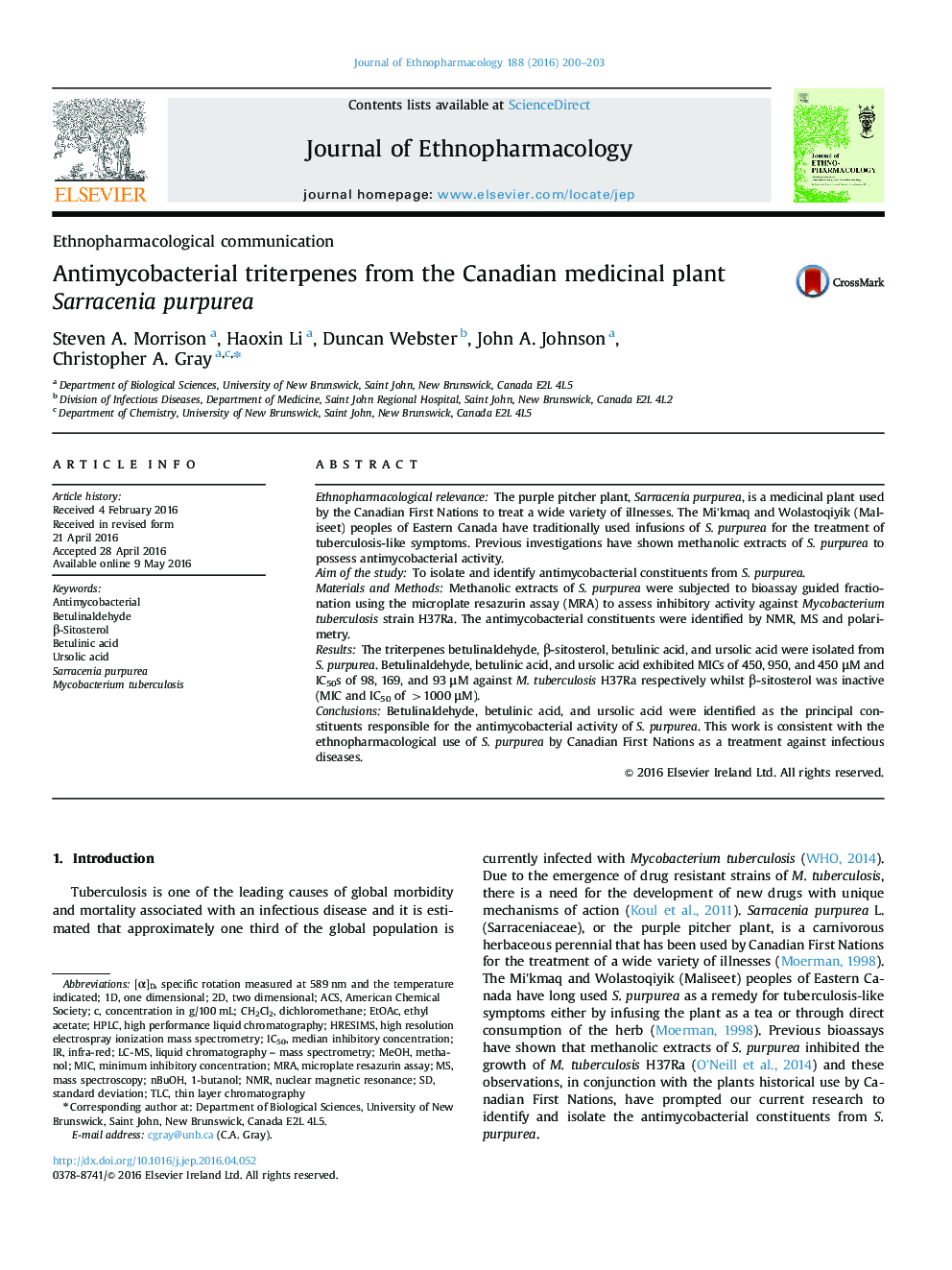| کد مقاله | کد نشریه | سال انتشار | مقاله انگلیسی | نسخه تمام متن |
|---|---|---|---|---|
| 2544763 | 1560374 | 2016 | 4 صفحه PDF | دانلود رایگان |
Ethnopharmacological relevanceThe purple pitcher plant, Sarracenia purpurea, is a medicinal plant used by the Canadian First Nations to treat a wide variety of illnesses. The Mi’kmaq and Wolastoqiyik (Maliseet) peoples of Eastern Canada have traditionally used infusions of S. purpurea for the treatment of tuberculosis-like symptoms. Previous investigations have shown methanolic extracts of S. purpurea to possess antimycobacterial activity.Aim of the studyTo isolate and identify antimycobacterial constituents from S. purpurea.Materials and MethodsMethanolic extracts of S. purpurea were subjected to bioassay guided fractionation using the microplate resazurin assay (MRA) to assess inhibitory activity against Mycobacterium tuberculosis strain H37Ra. The antimycobacterial constituents were identified by NMR, MS and polarimetry.ResultsThe triterpenes betulinaldehyde, β-sitosterol, betulinic acid, and ursolic acid were isolated from S. purpurea. Betulinaldehyde, betulinic acid, and ursolic acid exhibited MICs of 450, 950, and 450 μM and IC50s of 98, 169, and 93 μM against M. tuberculosis H37Ra respectively whilst β-sitosterol was inactive (MIC and IC50 of >1000 μM).ConclusionsBetulinaldehyde, betulinic acid, and ursolic acid were identified as the principal constituents responsible for the antimycobacterial activity of S. purpurea. This work is consistent with the ethnopharmacological use of S. purpurea by Canadian First Nations as a treatment against infectious diseases.
Figure optionsDownload high-quality image (289 K)Download as PowerPoint slide
Journal: Journal of Ethnopharmacology - Volume 188, 21 July 2016, Pages 200–203
